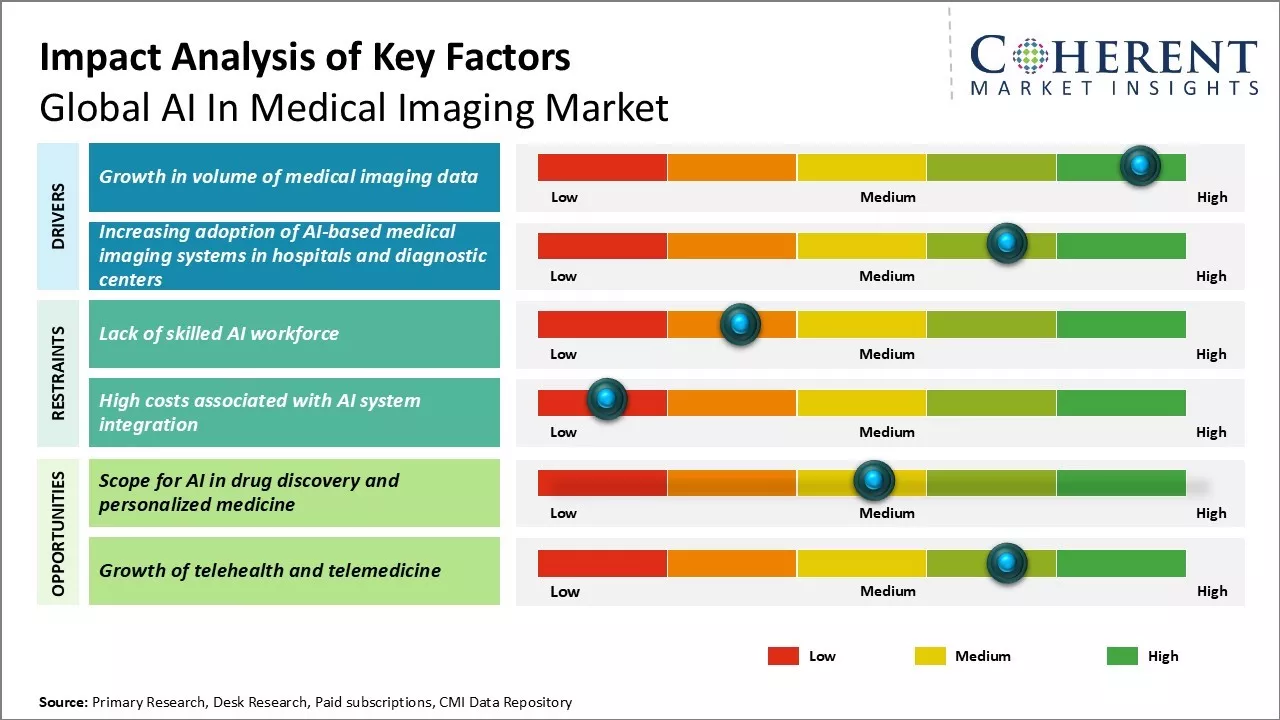Global AI in medical imaging market is estimated to be valued at USD 1.63 Bn in 2025 and is expected to reach USD 13.04 Bn by 2032, exhibiting a compound annual growth rate (CAGR) of 34.6% from 2025 to 2032.

To learn more about this report, Request sample copy
The global AI in medical imaging market is expected to witness significant growth during the forecast period. Growing applications of AI in medical imaging for various disease diagnosis and image analysis is expected to drive the market. AI assistance in medical imaging helps in faster and more accurate diagnosis by analyzing large amounts of patient data. Adoption of AI tools like deep learning and machine learning for medical image analysis is gaining traction among healthcare providers.
Market Driver - Growth in volume of medical imaging data
Modern medical imaging procedures have exploded in the past few years due to development and widespread adoption of technologies like CT, MRI, ultrasound, and others. These advanced imaging tools have enabled doctors to peek inside human body in great detail to detect diseases. However, rising number of imaging procedures can lead to increase in volume of medical images being generated every day. A large hospital may easily generate terabytes of imaging data on daily basis from various modalities. Moreover, recent advancements have enabled higher resolution images taking up more storage. Managing and analyzing this huge imaging data is a monumental task for healthcare providers.
According to research, single CT scan can generate over 500 images totalling around 50 MB data size. With millions of scans taken yearly across hospitals and diagnostic centers, accumulating imaging archives have swelled to petabytes of data. MRI scan generates multiple sequences of images totalling 100s of MB data per patient. Top academic medical centers with level 1 trauma facilities may have 50+ CT and MRI scanners that continuously add to imaging archives. Furthermore, rising lifestyle diseases and aging population can lead to increase in number of scans in the near future.
While storage of gigantic imaging archives is manageable with advanced systems, analyzing this data overload manually is nearly impossible. Even specialized radiologists cannot practically review entire previous scans of all patients coming for follow ups or second opinion. Thus, artificial intelligence plays a transformational role in this. Various AI algorithms are being developed and applied to sift through past images, detect subtle patterns and provide computer aided diagnosis. AI can even harvest quantitative data from images pave way for predictive, preventive and participatory healthcare. This has vastly expanded the realm of possibilities for precision medicine through data-driven insights. AI helps to overcome the limitations caused by constant growth in size and complexity of medical imaging archives.
Joining thousands of companies around the world committed to making the Excellent Business Solutions.
View All Our Clients